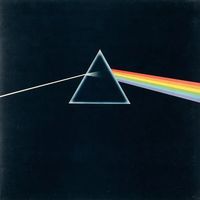The Aeolian Vamp: What It Is, Why It Works, and Famous Pop Tunes That Use It

Press Play to hear The Aeolian Vamp
The Aeolian vamp is a two, three, or four chord progression derived from the Aeolian mode, which is the natural minor scale. This progression is characterized by its repetitive nature and its ability to create a dark, hypnotic, or brooding atmosphere. Often used in various genres from pop to rock and jazz, the Aeolian vamp brings out the inherent beauty and complexity of the minor scale while keeping the structure simple.
In this article, we’ll dive into what the Aeolian vamp chord progression is, why it works so well musically, and explore famous pop songs that have successfully used it.
Famous Pop Songs That Use the Aeolian Vamp
Many songs across genres have utilized the Aeolian vamp for its emotional resonance and modal color. Below are some famous examples of pop songs that have successfully used this progression:
1. "All Along the Watchtower" by Bob Dylan (and Jimi Hendrix)
- Key: C minor (C#m - B - A)
- This classic song makes use of a variant of the Aeolian vamp with the i - VII - VI progression. The repetition of this progression throughout the song gives it a driving, hypnotic quality, while the lyrics provide a sense of narrative tension.
2. "Zombie" by The Cranberries
- Key: E minor (Em - C - G - D)
- The haunting quality of this song comes from its minor tonality and its repetitive, vamp-like structure. While the chord progression used in "Zombie" isn't strictly limited to i-VII, it carries the same dark, vamp-like energy often associated with the Aeolian vamp.
3. "Riders on the Storm" by The Doors
- Key: E minor (Em - D - C)
- This song creates a sense of endless journeying through its use of the Aeolian vamp. The i-VII-VI progression runs throughout the verses, creating a brooding, atmospheric sound that mirrors the song’s eerie, mysterious lyrics.
4. "Another Brick in the Wall" by Pink Floyd
- Key: D minor (Dm - C - B♭)
- The Aeolian vamp is used in this iconic Pink Floyd track to establish a dark, rebellious tone. The progression, along with the repetitive bass line and the song’s overall structure, reflects the alienation and tension expressed in the lyrics.
5. "Chameleon" by Herbie Hancock
- Key: B minor (Bm - A)
- This instrumental funk classic is built on a two-chord vamp in B minor. The minimalist progression creates a hypnotic groove that provides the foundation for Hancock’s improvisation. The Aeolian vamp’s ability to support extended improvisation makes it a favorite in jazz and fusion contexts.
6. "Eleanor Rigby" by The Beatles
- Key: E minor (Em - C)
- In “Eleanor Rigby,” the vamp-like repetition of Em and C gives the song its haunting, melancholic atmosphere. The song’s simplicity and use of minor tonality are key factors in its emotional impact.
7. "Shine On You Crazy Diamond" by Pink Floyd
- Key: G minor (Gm - F)
- Another Pink Floyd song that uses the Aeolian vamp, “Shine On You Crazy Diamond” has a haunting and introspective feel. The repetitive i-VII vamp serves as the foundation for one of the band’s most iconic and emotional pieces.
- Rolling in the Deep by Adele
- My Heart will go on by Celine Dion (Titanic theme tune)
- In the Air Tonight by Phil Collins
- Somebody that I used to Know by Goyte
What Is the Aeolian Vamp?
In music theory, the term "vamp" refers to a short, repeating harmonic or rhythmic figure that often serves as the foundation of a section of a song, or even an entire piece. A vamp can create a hypnotic effect, especially when paired with a steady rhythm. In the context of the Aeolian mode, the vamp typically revolves around two chords: the tonic chord (i) and another chord within the Aeolian scale.
The most common form of the Aeolian vamp is:
- i - VII (minor tonic to flat seventh)
This vamp can also expand to:
- i - VI - VII (minor tonic to flat sixth to flat seventh)
For example, in the key of A minor:
- i - VII: Am - G
- i - VI - VII: Am - F - G
The Aeolian vamp is based on the natural minor scale (the Aeolian mode), and its most recognizable feature is the movement between the tonic and the flattened seventh chord, giving it a dark, modal, and often hypnotic quality. This progression avoids the dominant (V) chord, which in traditional harmonic progressions is used to create tension before resolving to the tonic. By sidestepping this tension and sticking with a more static progression, the Aeolian vamp creates a more open-ended, moody, and unresolved feeling.
Why Does the Aeolian Vamp Work?
The Aeolian vamp works so well for a number of reasons, most of which stem from the harmonic qualities of the Aeolian mode and the nature of vamps in general. Here are some key reasons why it resonates with both musicians and listeners:
1. The Dark, Modal Sound of the Aeolian Mode
The Aeolian mode is the natural minor scale, which is inherently darker and more melancholic than its major counterparts. The movement between the tonic minor (i) and the major flat seventh (VII) gives the vamp a slightly bluesy feel, while the avoidance of the dominant (V) chord keeps the tension low, allowing the music to flow without needing to resolve. This openness makes it feel introspective or brooding, depending on how it's used.
By emphasizing the movement between the minor tonic and other chords like the VII or VI, the Aeolian vamp steers away from the typical expectations of resolution that we hear in more conventional progressions. This can create a hypnotic effect, as the listener is not led toward a sense of finality but instead kept in a more ambiguous space.
2. Repetition Creates Hypnosis
Vamps are often repetitive by nature, and the Aeolian vamp is no exception. This repetitive structure gives the listener a sense of stability and predictability, which can be used to create a trance-like, meditative effect. When this repetition is combined with the minor tonality of the Aeolian mode, it results in music that feels reflective, introspective, or even haunting.
Vamps are especially effective when paired with steady, rhythmically consistent instrumentation—common in pop, rock, and electronic music—creating a solid groove that listeners can lock into. This combination of a dark harmonic foundation with a steady, repetitive rhythm is a major reason why the Aeolian vamp has found a place in so many different styles of music.
3. Emotional Resonance
The Aeolian vamp’s inherent emotional flexibility is another reason why it works so well in music. Its minor tonality makes it well-suited for expressing feelings of longing, sadness, or introspection. At the same time, because it avoids the tension-release cycle of a traditional dominant-tonic progression, it can also create an air of mystery or ambiguity.
The lack of resolution means that songs using the Aeolian vamp often feel like they are suspended in time. This unresolved quality can evoke a sense of yearning or emotional depth, as the listener is not pushed toward a clear conclusion. Instead, the vamp creates space for reflection, making it ideal for songs that explore complex emotional states.
4. Simplicity and Versatility
The Aeolian vamp is simple in structure, typically revolving around just two or three chords. This simplicity gives it incredible versatility, allowing it to fit into a wide range of musical genres. Whether used in the driving, guitar-heavy music of rock or in the moody, atmospheric sounds of electronic music, the Aeolian vamp can serve as a harmonic foundation that supports a variety of melodic and rhythmic ideas.
Conclusion
The Aeolian vamp chord progression is a testament to the power of simplicity in music. Its hypnotic, repetitive nature, combined with the dark emotional depth of the Aeolian mode, makes it a favorite among musicians across genres. From rock to jazz to pop, the Aeolian vamp provides a flexible yet powerful harmonic foundation that evokes complex emotions while maintaining a sense of openness and ambiguity. Songs like “All Along the Watchtower” and “Zombie” showcase how this progression can drive the emotional core of a song while providing space for rhythmic and melodic creativity. Whether used to evoke feelings of longing, tension, or introspection, the Aeolian vamp remains a timeless tool in the songwriter’s arsenal.
NEXT >> the circle of fifths







